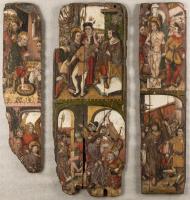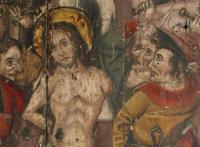
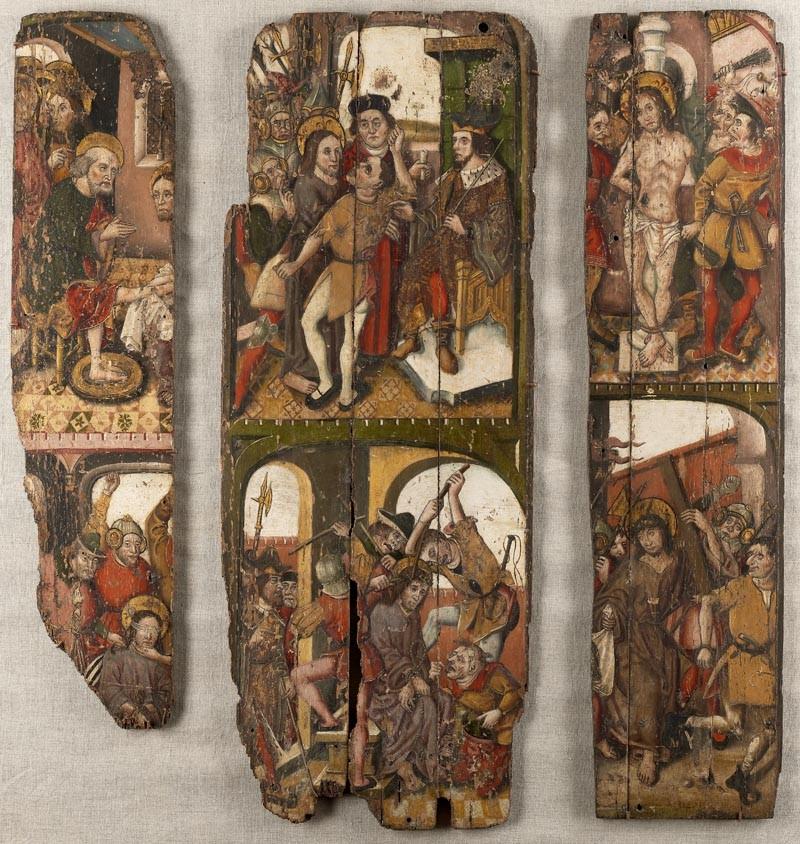
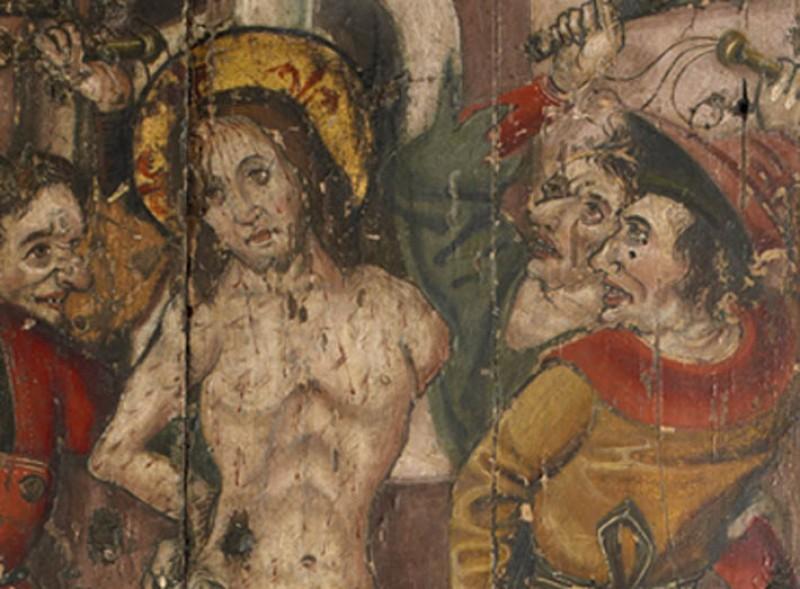
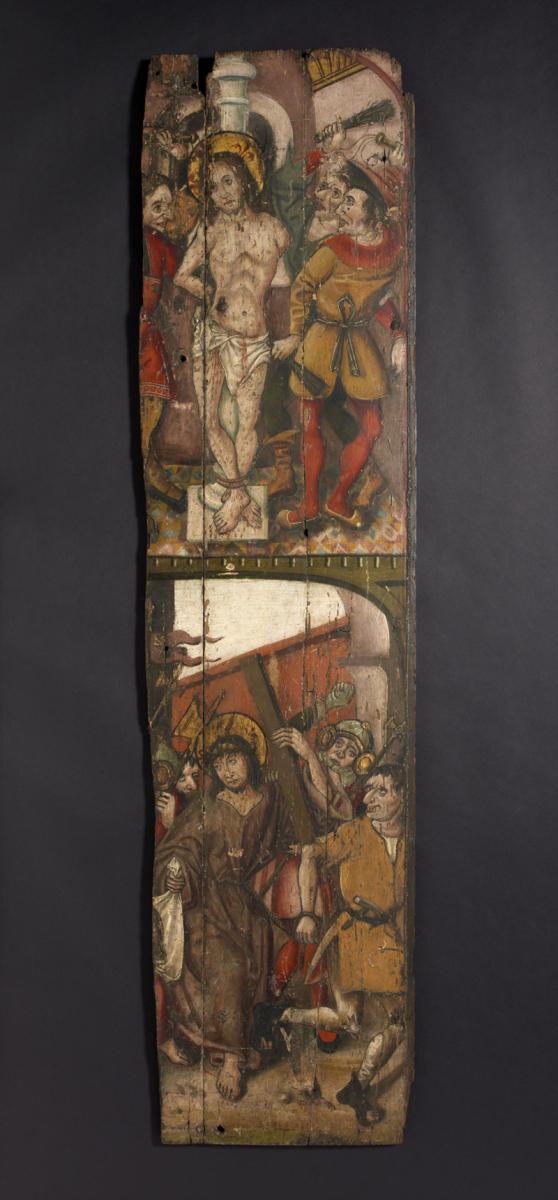
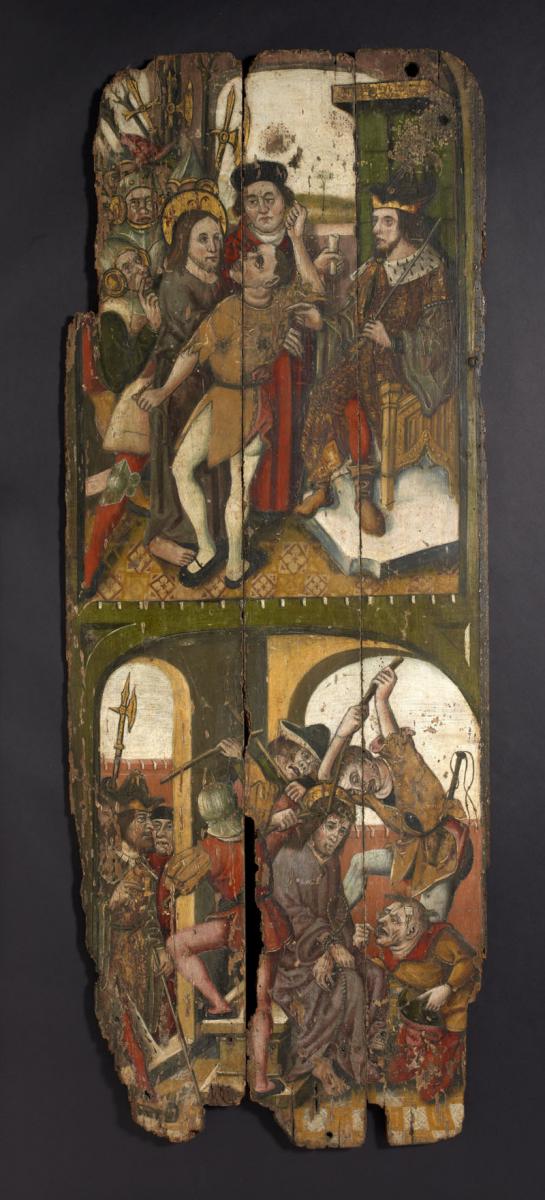
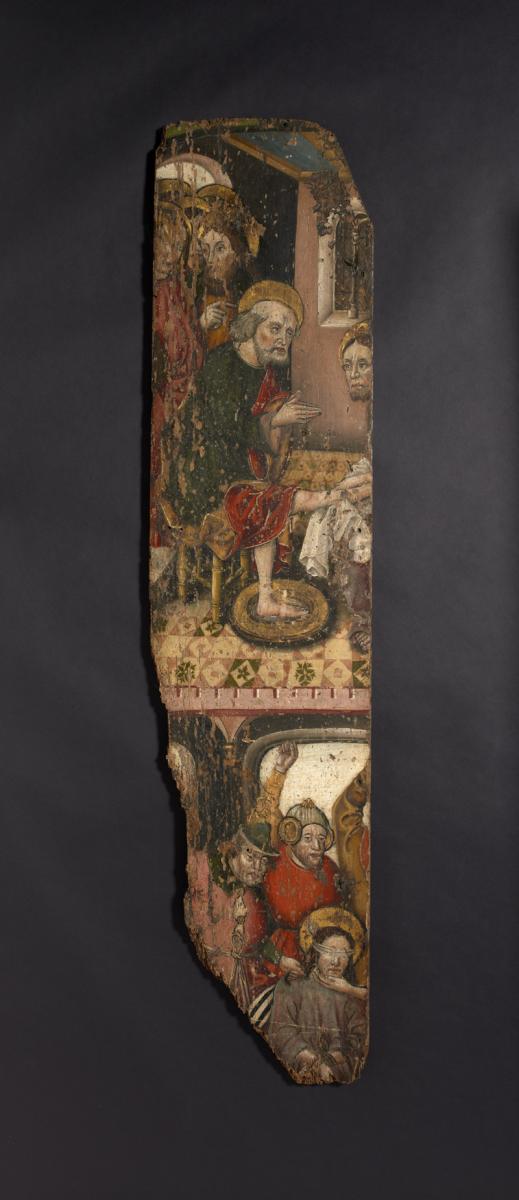
Price on application
This object is eligible for a Certificate of BADA Provenance
The BADA Standard
- Since 1918, BADA has been the leading association for the antiques and fine art trade
- Members are elected for their knowledge, integrity and quality of stock
- Our clients are protected by BADA’s code of conduct
- Our dealers’ membership is reviewed and renewed annually
- Bada.org is a non-profit site: clients deal directly with members and they pay no hidden fees
Expert opinion is that these panels are English, most likely East Anglian, though as yet not absolutely proven.
Oil on oak panel,
i) 52¾" x 20¼" (1,34m x 51.5cm).
ii) 52¼" x 13" (1,32.5m x 33cm).
iii). 46¼" x 10½ (1,17.5m x 26.5cm).
The three fragments of panels depict the Passion in a narrative sequence, each scene demarcated by painted borders. They show Christ washing St. Peter's feet, Christ before Pontius Pilate, the Mocking of Christ, The Placing of the Crown of Thorns, the Scourging of Christ, and Christ carrying the Cross.
These are evidently part of a larger narrative, and the remaining scenes probably would have included Christ's Entry into Jerusalem, the Last Supper, the Agony in the Garden, the Kiss of Judas, Peter's Three Denials, the Crucifixion, the Deposition, the Pièta, the Entombment and the Resurrection. The most complete panel suggests that the original work would have been of significant size. These fragments were most probably, therefore, part of an altarpiece: a reredos or retable.
If English, they are pre-Reformation, and consequently rare, as most painted decoration in English churches did not survive this period. It has been remarked that ‘the iconoclasm perpetrated by the English reformers in the mid-sixteenth century was much more extreme than anything which took place in Germany, where the Lutherans kept most medieval images and other carvings and works of art in situ when they adapted their churches to reformed worship'.(1) Dismal contemporary accounts by the perpetrators record this destruction, as well as its continuation which occured a hundred years later under the Commonwealth.(2)
Footnotes
1. John Martin Robinson, Treasures of the English Churches, 1995, p. 74.
2. See Roy Strong, Lost Treasures of Britain, 1990, especially chapters 3 and 6.
The BADA Standard
- Since 1918, BADA has been the leading association for the antiques and fine art trade
- Members are elected for their knowledge, integrity and quality of stock
- Our clients are protected by BADA’s code of conduct
- Our dealers’ membership is reviewed and renewed annually
- Bada.org is a non-profit site: clients deal directly with members and they pay no hidden fees


